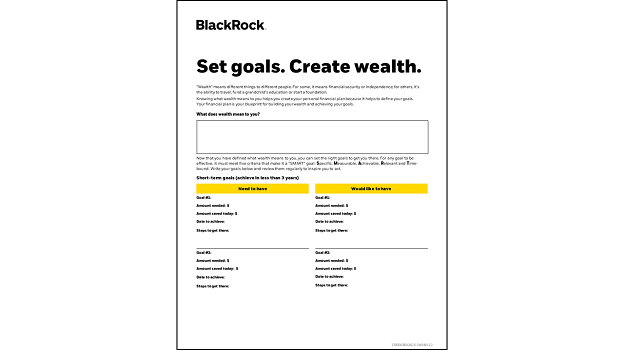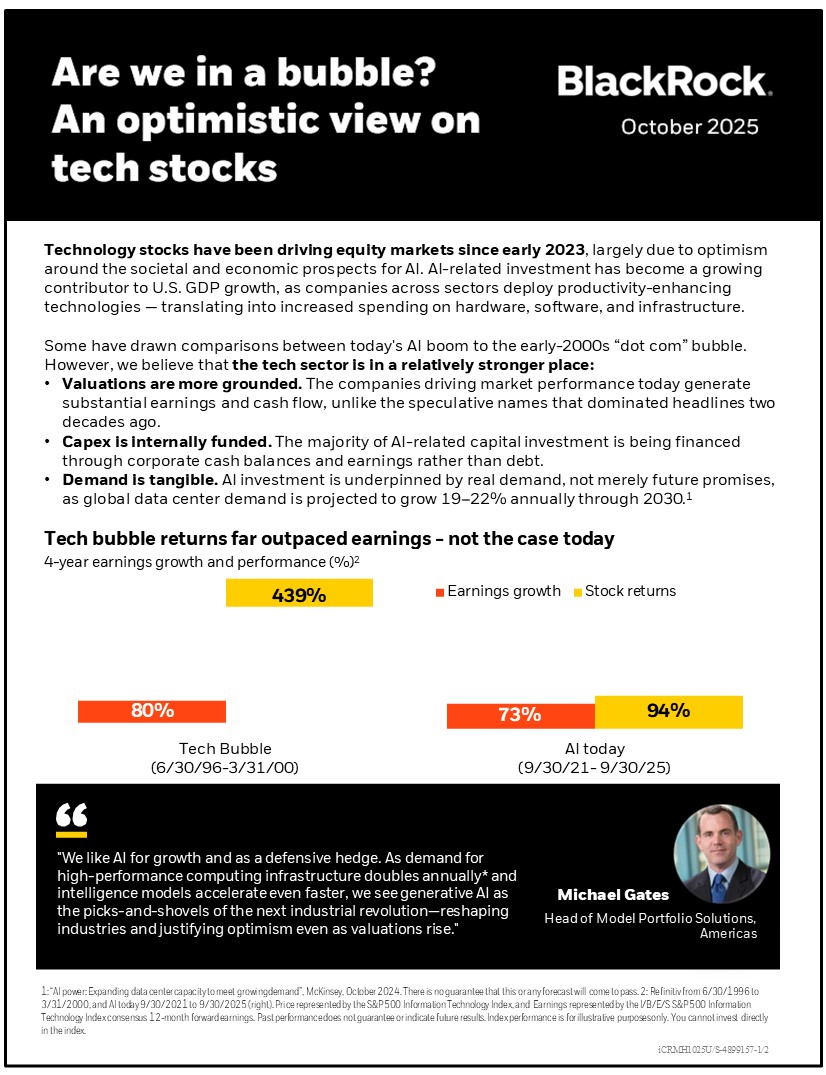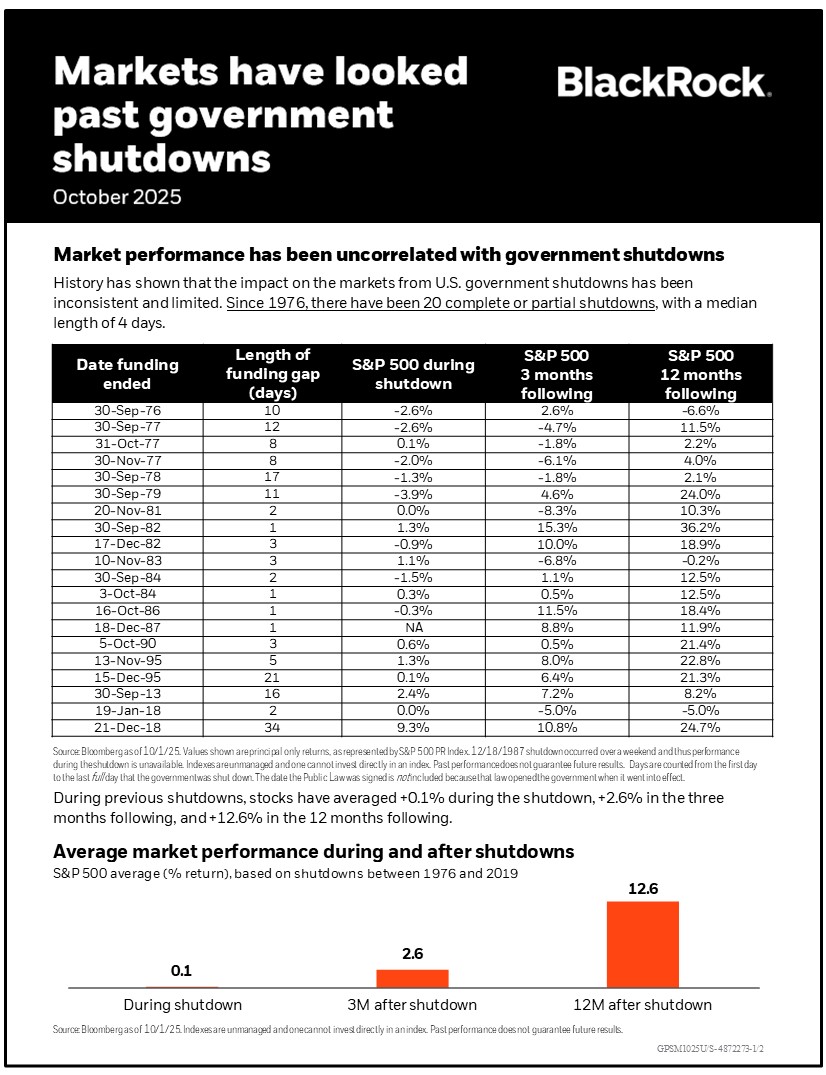
CONVERSATION STARTERS
Resources for better client conversations
Advisors often find that client conversations about market performance, retirement, and other life events are more effective when they have the right resources. Explore our library as you prepare for your next client meeting.
Multi Column Teaser-1,Video Player-1,Navigation List-1,Multi Column Teaser-2,Video Player-2,Multi Column Teaser-3,Navigation List-2
Image Cta-2,Navigation List-3,Multi Column Teaser-4,Navigation List-4,Image Cta-3
Image Cta-4,Multi Column Teaser-5,Navigation List-5,Image Cta-5
Image Cta-6,Related Content-1,Image Cta-7,Navigation List-6
Most investors know that a well-diversified portfolio is key to long-term investing success. But not all investors understand why. In fact, it might surprise you to learn that a portfolio’s ability to achieve strong long-term returns often has more to do with how well it withstands downturns in the market than how it performs during upswings.
You can see in the chart on the left that over the last few market cycles, the S&P 500 has had large bull markets but also large, profound downturns.
If you’re like most investors, those downturns can be hard to stomach. Which is why the chart on the right shows a lower volatility portfolio with a downside capture of 83. 'Downside capture' is how well the portfolio performs during negative performance of the benchmark. To use an even number, for example, a downside capture of 50 means that if your benchmark, let’s say the S&P 500 in this situation, returned -10%, your portfolio would return -5%.
A lower volatility portfolio usually doesn’t have as much octane on the upside, so we assumed an upside capture of 83 as well. Remember, an 'upside capture' is just like a downside capture but for positive performing time periods.
If we compare this hypothetical portfolio with the S&P 500, we can see the power of 'losing less' by having a lower downside capture in action. Since 2007, this portfolio grew more than the market despite capturing only about 83% of the positive returns of the market. The key reason: the portfolio didn’t lose as much, so it didn’t have to work as hard in the upturns to recoup its losses. The magic is in the math. When you have a relatively small loss, like 10%, bouncing back only takes a bit more positive return that the downturn itself. In this case, about 11%. But as the losses get larger, such as 50% percent, you need a much higher return to break even. In this case, about double the loss. Understanding this math is key to understanding why a portfolio designed to reduce the downside may better suit your needs without sacrificing your goals.
USRRMH0125U/S-4178777
Discuss how limiting losses can help maximize investment returns
Share our chart with clients to explain why limiting portfolio losses during a downturn can have a bigger overall impact across market cycles than capturing returns in a bull market.
Sometimes what poses the biggest risk to achieving your long-term goals is your emotions. This is especially common during large fluctuations in the market but can also happen during ordinary market cycles.
The further the market goes up, the easier it is to believe it’s going to go up forever, which can lead to buying near the top of the market. On the other hand, the lower the market falls, the more fearful you may become of losing more money, which can lead to selling near the bottom of the market.
Following this pattern is called “herding”. When the market is high, it’s because many other people have already bought in – which is why buying in would be considered “following the herd”. When the market is low, it’s because many other people have already sold.
As you might have guessed from the title of this piece, “following the herd” often backfires over the long-term.
As you can see in this chart, doing what everyone else is doing (represented by the orange bar) produced significantly smaller average returns than going against the herd, or even the market average itself. That’s why it’s really important to make your decisions based on your plan and convictions, not on market trends.
In the words of the great investor Warren Buffet, “Be fearful when others are greedy, and greedy when others are fearful.” But also remember, time in the market almost always trumps timing of the market.
USRRMH0225U/S-4210665
Explain why emotional investing can hurt portfolio performance
Investing based on emotions can lead investors to buy high and sell low. Use our chart to help clients overcome their desire to make investment decisions based on emotions rather than convictions.
Help clients manage investment risk in retirement
While investors have learned how to invest to accumulate wealth, they often overlook the changes needed to their portfolio as they enter retirement and start withdrawing. Educate clients on the importance of downside protection to sustain their lifestyle through retirement.
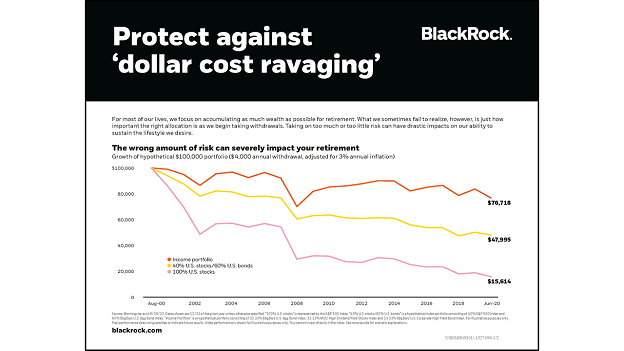
Explain the impact of withdrawal rates on investment portfolio value
The amount of money clients withdraw in retirement affects how long their wealth will last. Help clients find the right balance to meet their short- and long-term needs.
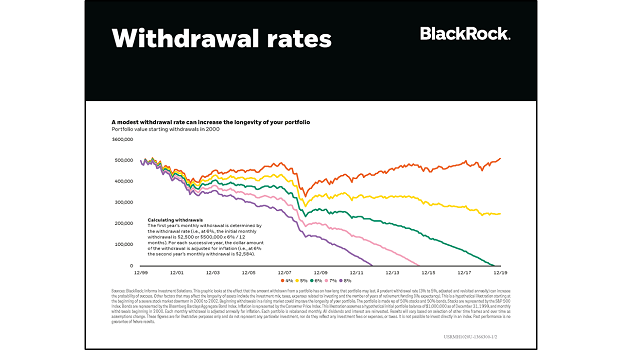
Help clients foster well-being in retirement
Help your clients lead a life in which they feel fulfilled, engaged and connected. Discuss characteristics of flourishing individuals and ideas to make a ‘good life’ even better.
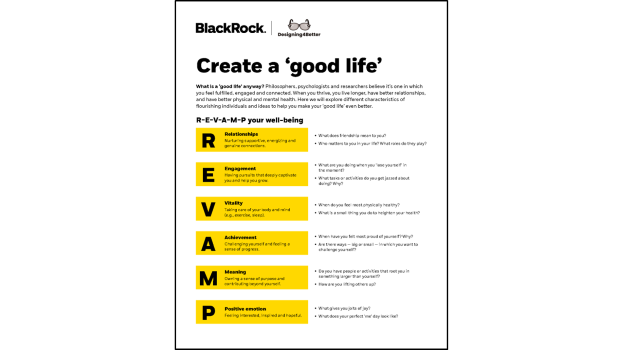
Help clients decide where to live in retirement
Do your clients know where they want to spend their retirement? The answer may change over time. Use our worksheet to discuss key questions and considerations with clients so they can plan where to live.
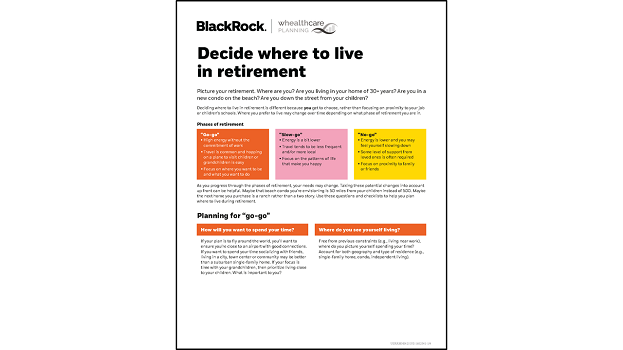
Align on an investment plan with your clients
Use this worksheet to create an investment policy statement (IPS) with each client. Ensure that their IPS takes their goals, constraints and asset allocation into account.
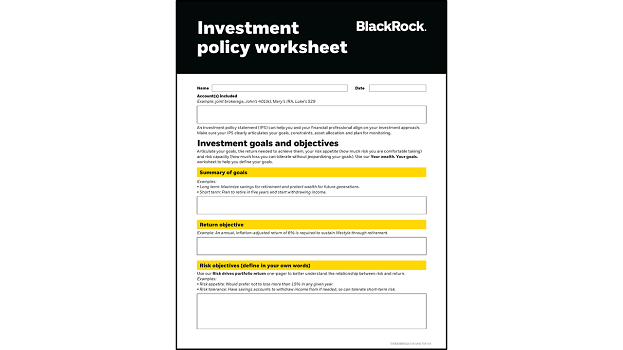
Help your clients articulate their investment goals
Everyone’s goals are different, whether it be saving for retirement, helping family, financial independence or traveling around the world. Use our worksheet to help identify clients’ goals and establish their financial plan.
